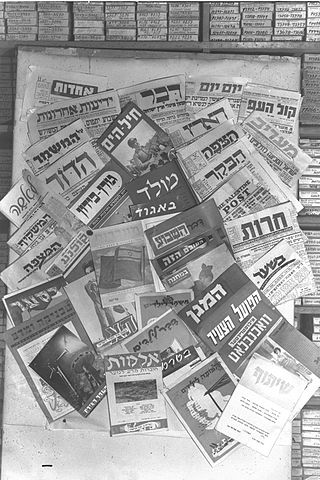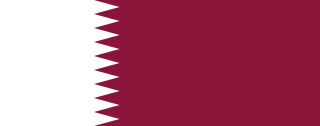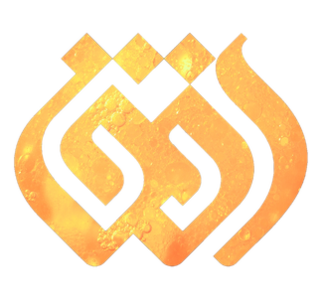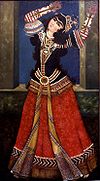
Iran's telecommunications industry is almost entirely state-owned, dominated by the Telecommunication Company of Iran (TCI). Fixed-line penetration in 2004 was relatively well-developed by regional standards, standing at 22 lines per 100 people, higher than Egypt with 14 and Saudi Arabia with 15, although behind the UAE with 27. Iran had more than 1 mobile phone per inhabitant by 2012.

Al Arabiya is a Saudi state-owned international Arabic news television channel. It is based in Riyadh and is a subsidiary of MBC Group.

The Islamic Republic of Iran Broadcasting formerly called National Iranian Radio and Television until the Iranian revolution of 1979, is an Iranian state-controlled media corporation that holds a monopoly of domestic radio and television services in Iran. It is also among the largest media organizations in Asia and the Pacific region and a regular member of the Asia-Pacific Broadcasting Union. Its head is appointed directly by the Supreme Leader, Ayatollah Ali Khamenei.

The mass media in Turkey includes a wide variety of domestic and foreign periodicals expressing disparate views, and domestic newspapers are extremely competitive. However, media ownership is concentrated in the hands of a few large private media groups which are typically part of wider conglomerates controlled by wealthy individuals, which limits the views that are presented. In addition, the companies are willing to use their influence to support their owners' wider business interests, including by trying to maintain friendly relations with the government. The media exert a strong influence on public opinion. Censorship in Turkey is also an issue, and in the 2000s Turkey has seen many journalists arrested and writers prosecuted. On Reporters Without Borders' Press Freedom Index it has fallen from being ranked around 100 in 2005 to around 150 in 2013.
In Iran, censorship was ranked among the world's most extreme in 2024. Reporters Without Borders ranked Iran 176 out of 180 countries in the World Press Freedom Index, which ranks countries from 1 to 180 based on the level of freedom of the press. Reporters Without Borders described Iran as “one of the world’s five biggest prisons for media personnel" in the 40 years since the revolution. In the Freedom House Index, Iran scored low on political rights and civil liberties and has been classified as 'not free.'

Al-Alam is an Arabic news channel broadcasting from Iran and owned by the state-owned media corporation Islamic Republic of Iran Broadcasting (IRIB).

Radio Zamaneh is an Amsterdam-based Persian language exile news platform and former radio broadcaster with a leftist approach. "Zamaneh" is the Persian literary term for "time".

There are over ten different languages in the Israeli media, with Hebrew as the predominant one. Press in Arabic caters to the Arab citizens of Israel, with readers from areas including those governed by the Palestinian National Authority. During the eighties and nineties, the Israeli press underwent a process of significant change as the media gradually came to be controlled by a limited number of organizations, whereas the papers published by political parties began to disappear. Today, three large, privately owned conglomerates based in Tel Aviv dominate the mass media in Israel.

The Ministry of Culture and Islamic Guidance is the Ministry of Culture of the Islamic Republic of Iran. It is responsible for managing access to media that, in the view of the Iranian government or the ministry, violates Iranian ethics or promotes values alien to Iranian culture. This may include internet censorship. It also manages the alignment of religion and the law of the country. It was formed by combining the Ministry of Culture and Art, and the Ministry of Information and Tourism. The merging of Ministries reduces the number of employment positions as the number of employable ministries also lessens.
The mass media in Afghanistan is monitored by the Ministry of Information and Culture (MoIC), and includes broadcasting, digital and printing. It is mainly in Dari and Pashto, the official languages of the nation. It was reported in 2019 that Afghanistan had over 107 TV stations and 284 radio stations, including 100s of print media and over 1,800 online media outlets. After the return of the Islamic Emirate of Afghanistan (IEA) in 2021, there was a concern that the mass media will significantly decrease in the country. The number of digital media outlets is steadily increasing with the help of Facebook, Instagram, TikTok, Twitter, YouTube, and other such online platforms. IEA's spokesman Zabihullah Mujahid suggested that the media should be in line with Sharia and national interests.

Algeria has more than 45 independent Arabic language and French language publications as well as 4 government-owned newspapers, but the government controls most printing presses and advertising. The Algerian newspapers with the largest circulations are Echourouk (1,800,000), Ennahar (1,600,000), El Khabar (1,000,000) and Quotidien d'Oran (700,000); all four are employee-owned. In 2004 and 2005, the government increased the access of Berber language and culture to both print and broadcast media.
Jam-e Jam is a Persian language daily newspaper published in Iran.

BBC Persian Television is the BBC's Persian language news channel that was launched on 14 January 2009. The service is broadcast by satellite and is also available online. It is aimed at the 120 million Persian-speakers in Iran, Afghanistan, Tajikistan, and Uzbekistan.

Propaganda in Iran originates from the Iranian government and "private" entities, which are usually state controlled.
Public diplomacy in the Islamic Republic of Iran refers to the public relations efforts to disseminate information about the Islamic Republic of Iran. Such efforts seek to communicate with foreign publics in order to establish a dialogue designed to inform and influence. Instruments of public diplomacy in the Islamic Republic of Iran include cultural exchanges, film and print media, and sports diplomacy.
Television was first introduced to Iran in 1958, as a privately-owned and commercially-operated enterprise, before being nationalised, remaining a state-controlled monopoly, first of National Iranian Radio and Television, and following the Iranian Revolution in 1979, of Islamic Republic of Iran Broadcasting.

The mass media in Qatar relays information and data in Qatar by means of television, radio, cinema, newspapers, magazines and the internet. Qatar has established itself as a leading regional figure in mass media over the past decade. Al Jazeera, a global news network which was established in 1996, has become the foundation of the media sector. The country uses media to brand itself and raise its international profile.

IRIB Ofogh, is an Islamic Republic of Iran Broadcasting television channel, is broadcast Worldwide.













